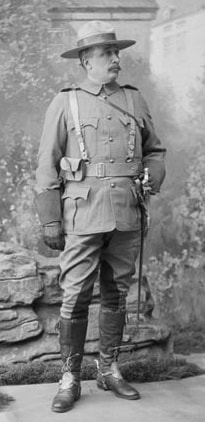Jim Cameron
On Remembrance Day, when Cranbrook citizens gather in Rotary Park to pay allegiance to those who have served in Canada's military conflicts, there are likely few who give a thought to the 46 names listed on the Wall of Honour under the heading "Boer War."
It is understood to mean the Second Anglo-Boer War (1899-1902). Cranbrook did not exist during the First Boer War (1880 – 1881). The Boers — transplanted Dutch farmers living in South Africa — referred to it at the time as the "First Freedom War," which gives an idea of their point of view.
During the 18th and 19th century the Boers annexed South African land from the natives, notably the Zulus, a fierce fighting African tribe. The Zulus were not happy, the Boers were not particularly secure and, so saying, the English stepped up to the crease in 1877 and annexed the whole shebang.
British troops subdued the Zulu threat by 1879 (in a rather shoddy fashion, to be sure) and set about running the country. The Boers soon took exception to the English presence, especially English taxation, and demonstrations began to take on violent overtones.
Following a Boer Declaration of Independence in 1880, the hostility became a war. The Boer Afrikaners of the South African Transvaal and Orange Free State had no formal army but were, as the English would soon discover, a canny and hard-fighting lot, relying on mobility, stealth and good aim from afar while the British tended to parade about in bright red and blue uniformed groups, presenting perfect targets and suffering insufferable heavy losses.
England, soon realizing it was to be a long and costly conflict, signed a peace treaty in 1881, allowing the Boers a certain amount of domestic autonomy.
The war was over and all seemed to be well until 1886, when a large cropping of gold was discovered near Pretoria, large enough that, by 1899, the British decided it would be well worth the effort of taking control of South Africa once again. The Boers heartily disagreed.
Thus began the Second Boer War. The British, having apparently learned nothing of effective battle tactics against the Boers the first time around, struggled once again against their foe. The call went throughout the British Empire for volunteers to support the cause and thousands answered.
Aside from the Cranbrook volunteers who journeyed to South Africa, there is another notable connection to the Boer War in the form of local icon Sam Steele. If there was something big taking place on the Canadian frontier then Samuel Benfield Steele was usually there. From Louis Riel and the Red River Rebellion to the formation and march west of the North West Mounted Police four years later, from his meeting with Sitting Bull following the massacre of General Custer and his troops to the Battle of Frenchman's Butte during the Northwest Rebellion, from the Klondike Gold Rush to the suppression of the whiskey trade, Sam Steele was the man on the job.
His police settlement at Galbraith Ferry (later re-named Fort Steele in his honour) in 1885, gave him a healthy respect for the settlers of the Kootenay and when he was offered the command of the soon-to-be-formed-to-fight-the-Boers Strathcona Horse light cavalry it was at Fort Steele that a recruiting station was opened in February, 1900.
Sam Steele led his troops by example and they did not let him down. The Strathcona Horse, utilized for reconnaissance, raiding and communications, met the Boers in many skirmishes and bloody battles. Steele disliked the British "scorched earth" policy of burning towns, farms and fields and relocating Boer citizens to concentration camps — a relatively new concept which saw the death of thousands of women and children from exposure, disease and starvation, creating a profound hatred of all things British and an unrelenting determination to continue the fight.
Nonetheless, Steele and his men performed their duties to the best of their abilities, earning praise, citations, medals and a meeting with King Edward VII at Buckingham Palace upon their return to London following the war.
And so we hearken to the volunteers of Cranbrook, British Columbia, 4,500 miles from the seat of British government, almost 10,000 miles from the South African battlefields. Amongst the local citizens of English descent a general feeling of patriotism begins to grow. A feeling of, "Who are they to think that they can take away something that we took from them and then gave back after they took it from someone else, anyway? Hah!"
And with that feeling comes a sense of adventure for the young, single man who has perhaps seen little of the world but can certainly ride a horse, live off the land, shoot a gun, understands the colour of gold and shuns bright red and blue uniforms — in other words, just the man for whom Lord Strathcona and Sam Steele are looking. And so it is, that in two days in early February, 1900, the quota for enlistment in the Kootenays is met, with over 40 men taking the king's shilling to join the likes of future British Prime Minister Winston Churchill, author Arthur Conan Doyle, stretcher bearer Mahatma Gandhi, poet John McCrae, and boy-scout founder General Lord Baden-Powell in high adventure on the open plains and rolling hills of South Africa, while learning such Afrikaans words as commando, guerilla, apartheid, corral, trek, veldt and aardvark.
Who were these daring young men from the Kootenays who signed on the line to fight for King and Country halfway around the globe? Next week: The Cranbrook Men of The Strathcona Horse.
